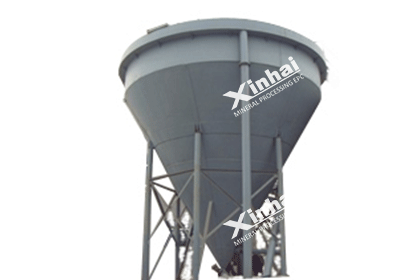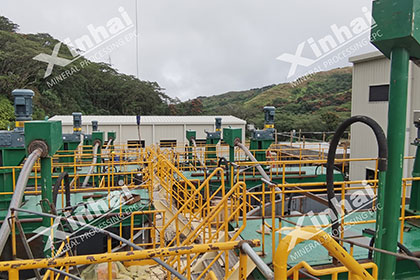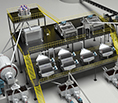What are the Methods of Extraction of Cobalt?
 Sheena
Sheena
 Oct 24, 2025
Oct 24, 2025
 503
503
If you want to know more details about equipment, solutions, etc, please click the button below for free consultation, or leave your requirements!
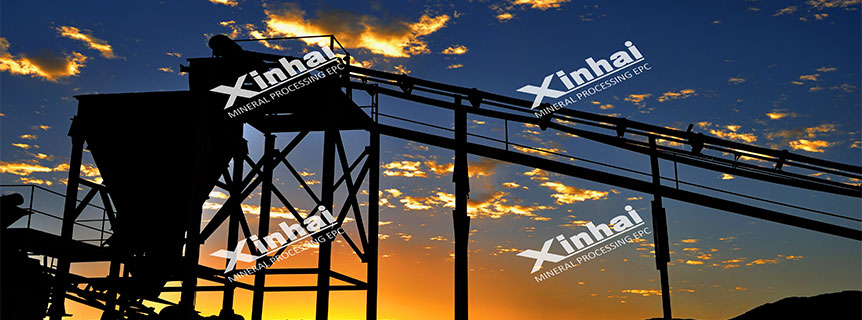
Cobalt-extraction-plant
Cobalt is a key strategic metal used across battery technologies, specialty alloys and high-tech applications. While hydrometallurgical and pyrometallurgical refining paths dominate much of the global market, many cobalt-bearing ores — especially those associated with copper, nickel, iron or manganese systems — are best served by robust ore-beneficiation or "pre-treatment" methods. These methods include gravity separation, magnetic separation, flotation, and re-selection (re-processing of tailings or lower-grade material).
In this article we present the main ore-processing routes and show how each fits into a cobalt extraction strategy.
01Gravity Separation for Cobalt Ores
BackGravity separation exploits differences in specific gravity (SG) between usable mineral (ore) and gangue. While gravity alone cannot produce final battery-grade cobalt, it is an excellent pre-concentration method in many cobalt systems.
When is it applicable?
Cobalt hosted in coarse, well-liberated mineral forms (e.g., oxide/hydroxide, manganese/cobalt oxides) where density differences exist.
Tailings or coarse rejects where gangue fines and slimes dominate and the heavy cobalt-bearing minerals remain.
Systems where the liberation size is amenable to gravity devices (e.g., > 0.1 mm).
Typical methods
Shaking tables: effective for fine-to-medium size heavy minerals.
Spiral concentrators: for coarse/heavy fractions with continuous feed.
Jigs: for stratification and heavy material recovery.
Dense media separation (DMS): sometimes used if feed quantity and size justify.
Benefits
Low operating cost (low reagent use).
Simple to operate and maintain.
Good for coarse recoveries and tailings re-processing.
Limitations
Not suitable for very fine liberation sizes (< 0.05 mm) or for heavily disseminated cobalt minerals.
Cannot remove all the gangue; needs subsequent flotation/magnetic separation for higher concentration.
In a typical beneficiation flow for a manganese-cobalt oxide ore (asbolite), you might apply gravity separation first to recover the heavy cobalt-manganese minerals, then follow with flotation or magnetic separation for further purification.
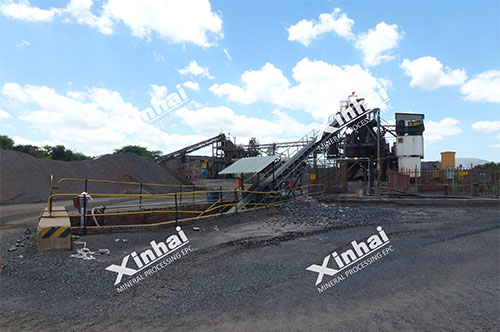
02Magnetic Separation for Cobalt Ore Processing
BackMagnetic separation exploits the magnetic susceptibility of minerals to separate magnetic from non-magnetic materials. It is particularly useful when cobalt is associated with iron minerals (magnetite, pyrrhotite) or other magnetic gangue/host minerals.
Typical scenarios
Iron-cobalt deposits where cobalt is hosted along with magnetite, pyrrhotite, or other sulfides.
Where a coarse magnetic/ferrous gangue can be removed to upgrade the feed prior to flotation.
Where processing tailings with residual magnetic/iron minerals makes sense.
Methods
Wet high-gradient magnetic separators (WHIMS): For fine particles of magnetic minerals.
Drum magnetic separators: For coarser particles.
Magnetic cleaning/scavenging: Once initial concentrate is made, further magnetic circuits remove residual iron minerals.
Benefits
Effective removal of iron and ferrous gangue, improving downstream processing (less interference, fewer reagents).
Reduction in volume of material needing flotation, lowering cost.
Pre-concentration benefits: e.g., you may remove a large part of the mass while keeping most of the cobalt.
Limitations
If cobalt is present in non-magnetic minerals, then magnetic separation alone is insufficient.
For fine sizes or complex matrices, magnetic separation may lose efficiency.
A combined flow might first apply magnetic separation to remove iron/magnetite, then flotation on the remaining fraction to recover cobalt minerals.
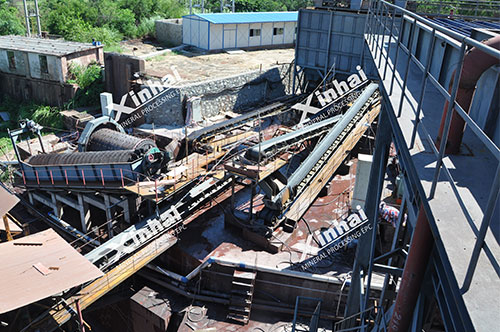
03Flotation for Cobalt Ore Processing
BackFlotation is one of the most versatile beneficiation techniques, especially suited to sulphide-rich cobalt ores (e.g., copper-nickel-cobalt systems, copper-cobalt polymetallic ores).
Why flotation?
Cobalt is often locked in sulphide minerals (e.g., cobaltite, arsenopyrite, chalcopyrite). These exhibit distinct surface chemistry and can be floated.
Flotation allows selective separation of cobalt (or copper-cobalt mixed concentrates) from gangue.
Combined circuits (differential flotation, mixed flotation) enable separation of multiple valuable metals (Cu, Ni, Co) from the same ore.
Typical flotation flow types
Mixed flotation: Copper, nickel and cobalt are floated together to form a bulk Cu-Ni-Co concentrate. This is often used for copper-nickel-cobalt sulphide ores.
Differential flotation: Copper is floated first, then cobalt (or cobalt sulphide) is floated in a second stage. For copper-cobalt deposits.
Selective flotation: Adjusting collectors, inhibitors and pH to preferentially float cobalt (or copper) depending on target. In copper-cobalt systems lime, sodium silicate, xanthates etc are used.
Flotation after magnetic/ gravity pre-concentration: To improve feed grade and reduce reagent consumption.
Key reagents and conditions
Collectors: e.g., xanthates, D-series fatty acids or mercaptans for sulphides.
Inhibitors: Lime to depress unwanted minerals, sodium silicate to suppress gangue silicates.
pH control, aeration, cell type (mechanical/flotation cell) and residence time all play a role.
Pros
High enrichment of cobalt in concentrate.
Flexibility to handle polymetallic ores.
Good for processing sulfide cobalt ores and improving value before metallurgical refining.
Cons
Reagents cost and tailings management.
Fine grinding may be required to liberate cobalt minerals (higher energy cost).
Some complex ores require extensive optimization (e.g., arsenic-rich, extremely fine disseminations).
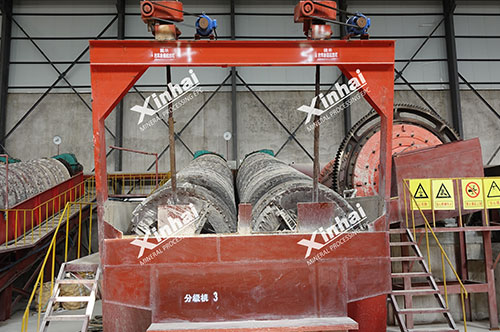
04Re-selection (Tailings/Lower-Grade Material Processing)
BackRe-selection refers to the process of re-processing existing tailings, coarse rejects or lower-grade ore stockpiles to recover residual cobalt (and associated metals) that was previously unrecoverable or uneconomic.
Why re-selection?
Many historic cobalt (or copper/cobalt) operations left behind substantial losses in tailings or coarse rejects.
With improved beneficiation technology (gravity, advanced flotation, magnetic separation) the residual cobalt may now be economically viable.
Re-selection lowers the need for fresh ore and may reduce environmental footprint and permitting burden.
Our approach
Tailings characterisation: grain size, mineralogy, liberation by size, residual cobalt grade.
Gravity separation (shaking table, spiral, jig) to recover coarse heavy cobalt-bearing minerals.
Flotation/magnetic separation as required to upgrade finer fractions or magnetically distinct minerals.
Circuit design for low-grade feed, variable tonnage, retro-fitting into existing infrastructure.
Benefits
Lower capital cost vs new mining development.
Rapid pay-back due to higher head grades (from leftover material).
Enhanced sustainability credentials (minimising waste, re-using tailings).
Thus, for a company looking to implement a cobalt processing plant built around beneficiation rather than full metallurgical refining, re-selection is an ideal first phase.
05Conclusion
BackThe extraction of cobalt is a complex but critical process in modern metallurgy. Each method has its own technical and economic strengths.
As the global demand for cobalt continues to grow — driven by electric vehicles and renewable technologies — efficient, sustainable extraction methods will be vital. Combining traditional expertise with modern green technologies offers the most promising path toward sustainable cobalt production.
 +86 183 3575 8886
+86 183 3575 8886 pinklaurabao@gmail.com
pinklaurabao@gmail.com



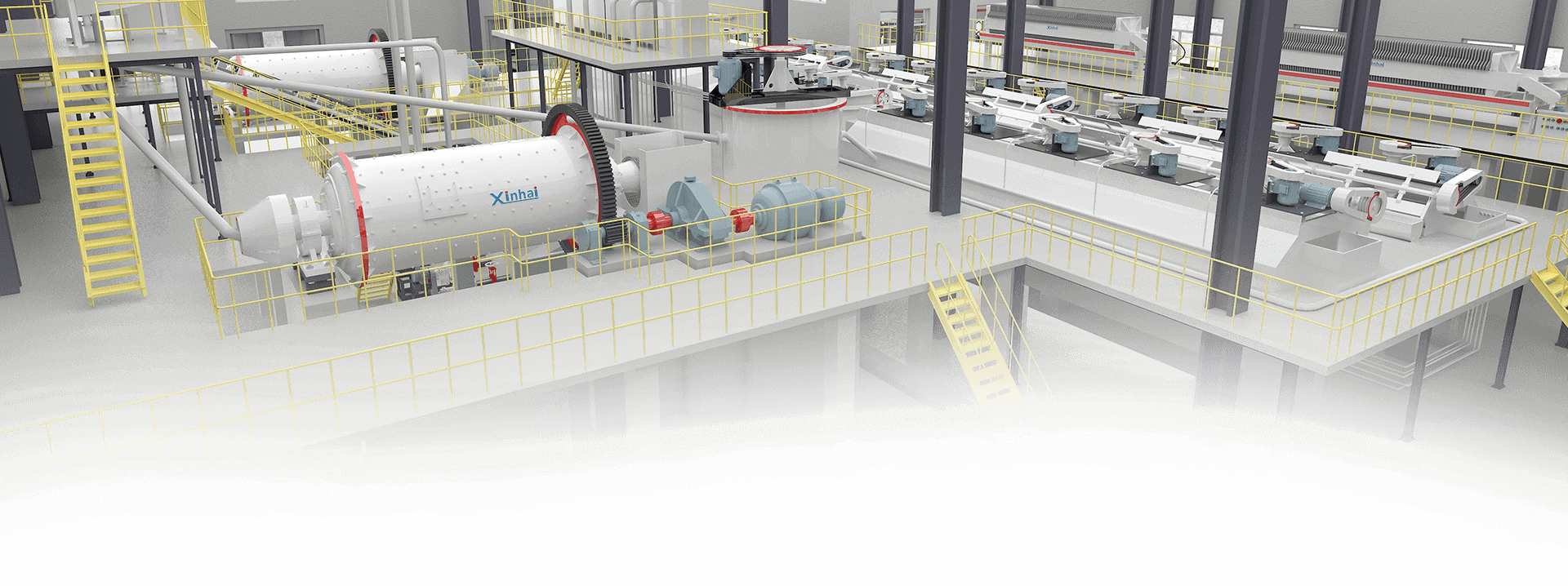
 Message
Message Chat Now
Chat Now


